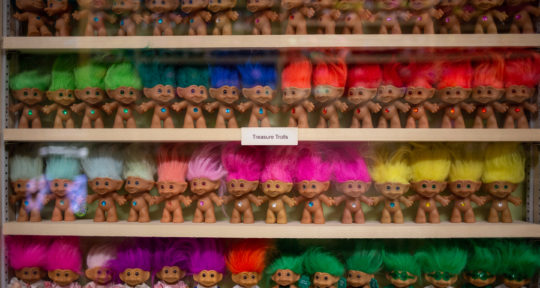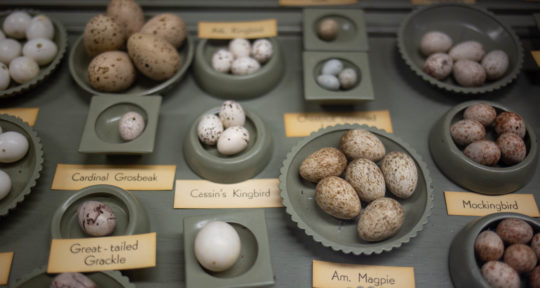Like many people, Brandon and Julie Howey spent most of early 2020 confined to their house. But while others were baking banana bread and learning TikTok dances, the Howeys were hunkered down in their Indiana art studio making miniatures. Their minuscule replicas of everyday objects—including a pool table, hot dog cart, and boxes of Raisinets—were destined for an epic diorama depicting the couple’s unique vision of Main Street USA.
The centerpiece of the Howeys’ Wacky Taxidermy and Miniatures Museum in Mackinaw City, Michigan, includes everything you’d expect to find in a typical small town, including a tavern, tattoo parlor, and movie theater. The residents of Mackinaw’s miniature Main Street are forever frozen, performing a variety of tasks ranging from the mundane (Boy Scouts roast marshmallows over a campfire) to the magical (a witch casts spells). But each scene has a macabre twist: This fictional town is populated entirely by dead mice.
The Howeys, who got married as teenagers, never intended to have children of their own. But after years spent collecting taxidermy from flea markets and antique stores, the couple—now in their early 30s—shared their home with hundreds of mice, squirrels, and other animals. Yes, the various critters are all dead—but there may be worse ways for a coyote to spend the afterlife than posed at a table in the middle of a lively poker game with a fox, squirrel, cigars, and perpetually full pint glasses.
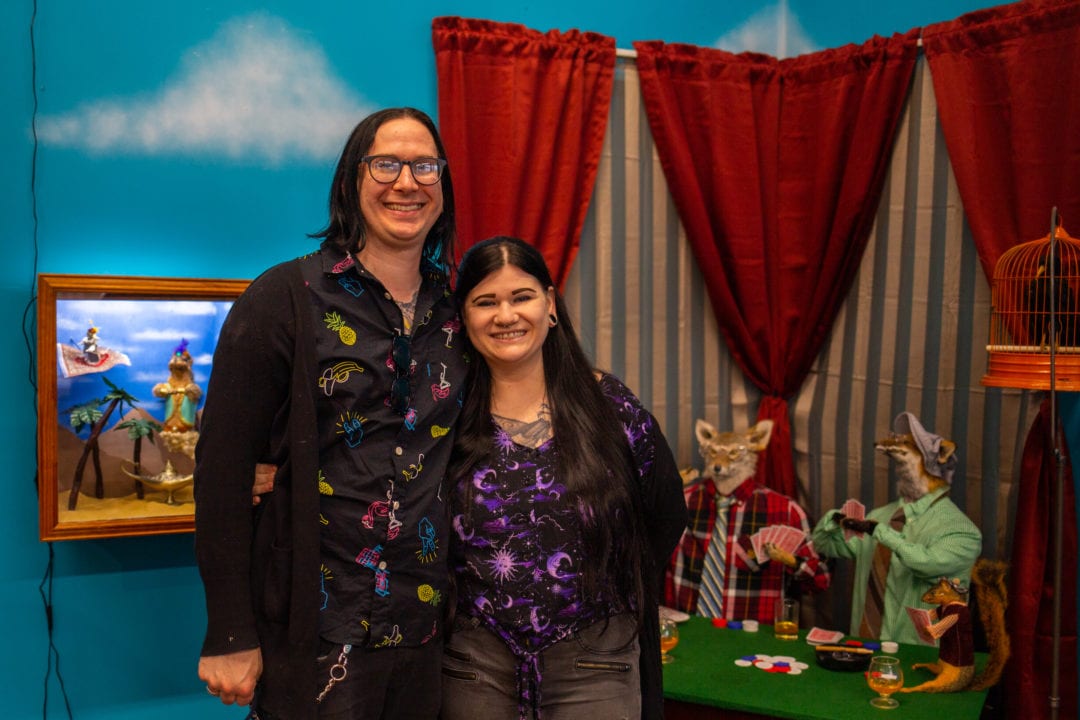
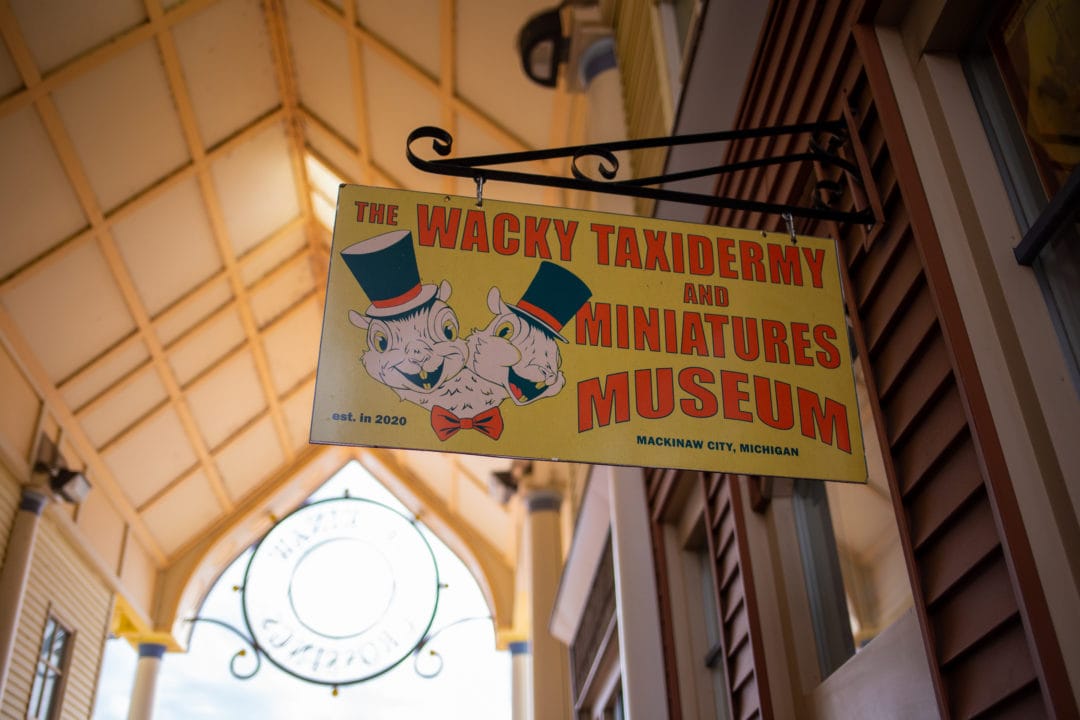
The couple had been working diligently on their dioramas for years; when they decided to finally open a museum to share their art with others, they first considered tourist-trap towns like Niagara Falls and Gatlinburg, Tennessee, but ultimately chose Mackinaw City. In a normal summer, the coastal town sees an influx of visitors passing through, most of whom continue on to Mackinac Island via a ferry or the Upper Peninsula by crossing the Mackinac Bridge. But when the pandemic hit, and they couldn’t travel to Michigan, the couple was forced to put their plans on hold and spent quarantine at their home in Indiana.
“Everything is on lockdown and we had to sit around for 2.5 months just saying, ‘Oh god, did we just make the worst mistake of our lives?’” Brandon says. The seasonal museum was eventually able to open on a limited basis in the summer of 2020 and resumed regular hours in May, 2021. “It ended up being perfect because we used to do art shows and conventions, so it’s kind of a blessing that we opened the museum, because we can still do [what we love],” Brandon says.
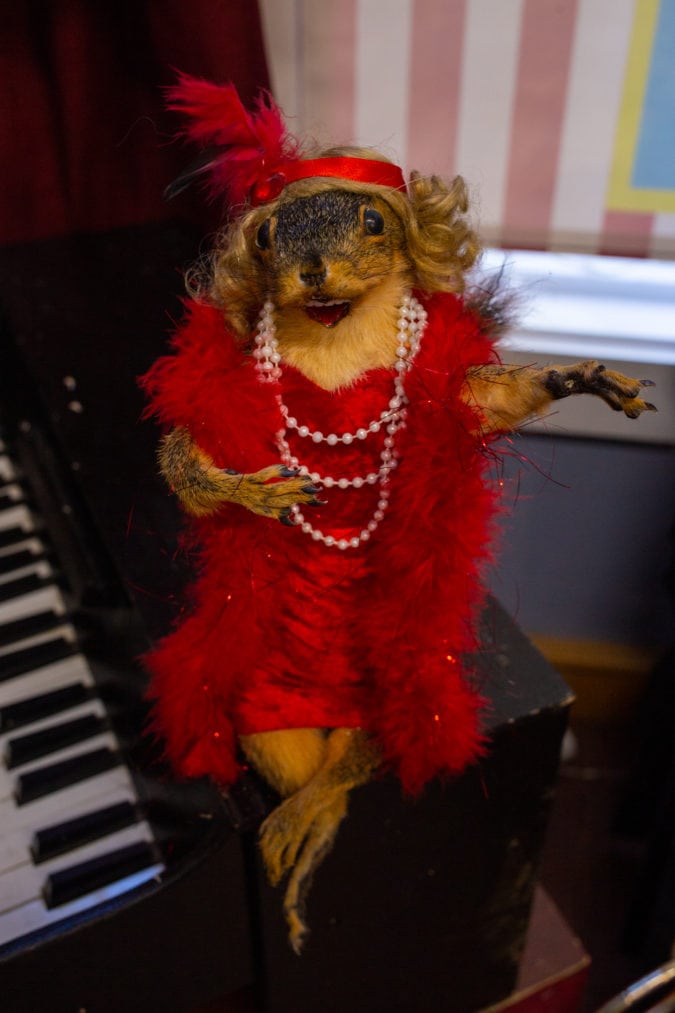
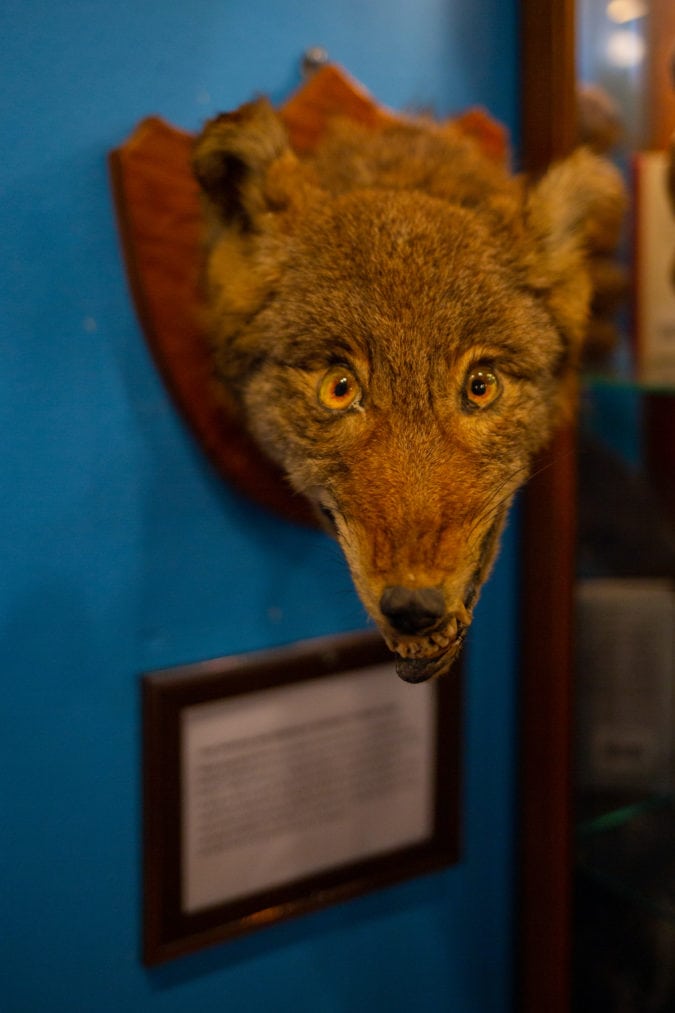
Weirdos who collect weird things
When they were both just 18 years old, the Howeys toured a Ripley’s Believe It or Not! on their honeymoon in Florida. While Julie laments that the oddities franchise—which was established in 1918 and now includes dozens of museums and aquariums around the world—has become “too commercial,” she says that the newlyweds emerged from the museum thinking, “This could be who we are as adults, weirdos who collect weird things.”
Although they both insist that since moving most of their oddities to Michigan, their Indiana house is now “empty and boring,” I get the sense that’s not entirely true. I’m a collector myself—and my tastes align almost perfectly with the Howeys’—so I understand when Julie tries to explain the complicated optics of having interests that fall outside of the ever-changing definition of “normal.”
“Everyone thinks our house is filled with hearts in jars and dead cats,” Julie says. “It’s not that we don’t have that stuff, but people think we’re dark and morbid when our home is actually happy and cute—we have a bright yellow living room.” When Brandon interjects to say that they’ve recently begun to collect creepy clown paintings, Julie laughs and admits, “Yes, I do also want things that terrify other people.”
The Howeys, who cobbled together a living as musicians and by selling their creations at art shows, say that they were both lifelong crafters who “stumbled accidentally” into the world of taxidermy and miniatures. “Nobody was making anthropomorphic taxidermy,” Brandon says. “We couldn’t find it to buy it, so we thought, ‘Well, we’ll just make it ourselves.’” They watched a few how-to videos and made their first mouse—and then they made dozens more. The couple, who usually welcome calls from friends about fresh roadkill, say their freezer is currently full.
“We don’t pick things up anymore,” Brandon says. “We can’t keep up with it.”
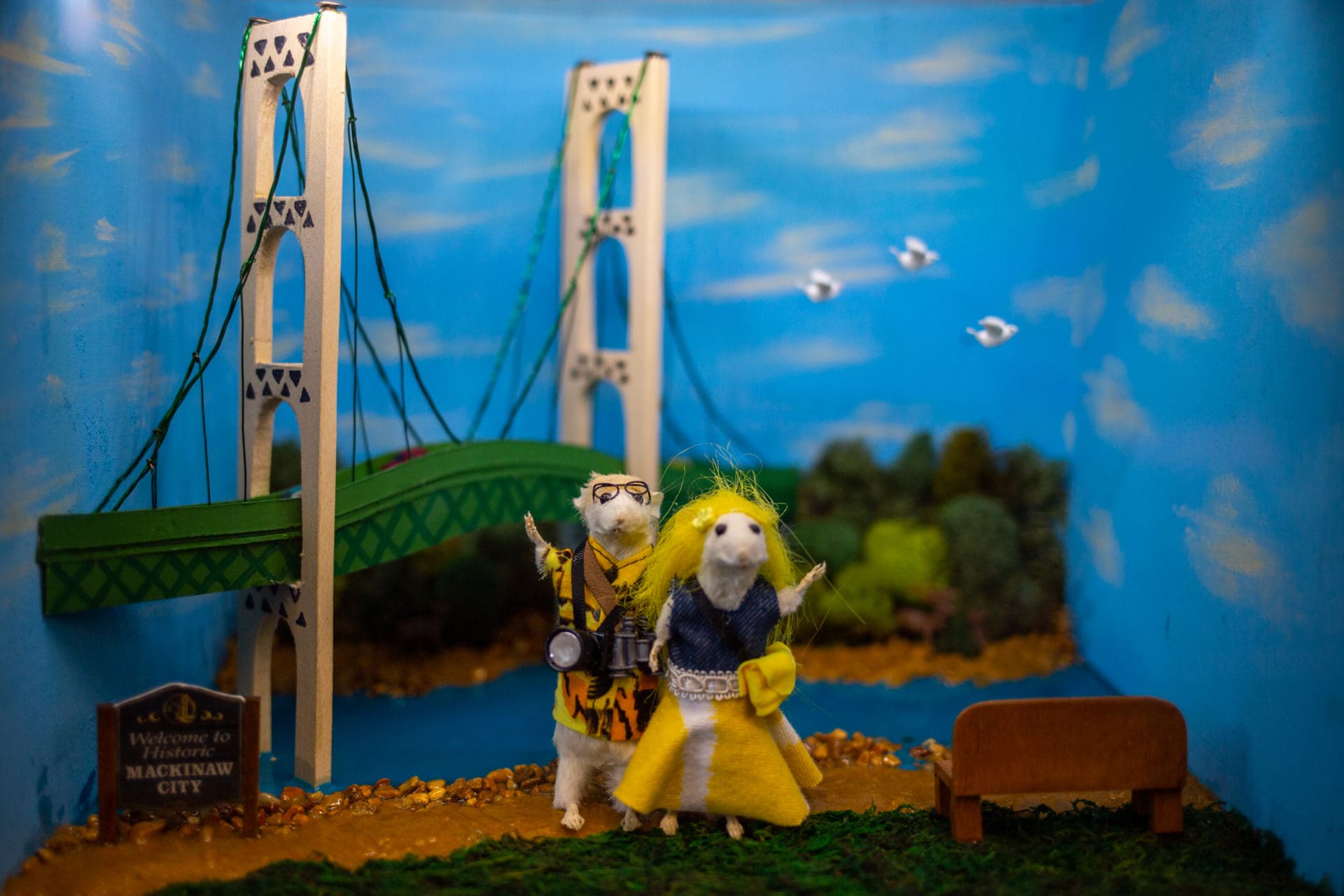
‘We don’t kill anything’
Contrary to what many people may think, Julie says that a final taxidermy piece only contains a small percent of the original animal. The skin is removed and cleaned in a process that she admits can be “pretty gruesome,” and stuffed with forms the couple crafts from foam, cotton, and wire. Mice are sourced from the Howeys’ home or purchased frozen from feeder supply places. The skinless carcasses are donated back to a local bird sanctuary (to be eaten by eagles, owls, and hawks), or disposed of naturally.
“We try to give the rest back to nature,” Julie says. “We throw them in the woods so that scavengers can still eat them.”
The Howeys still sometimes get pushback from animal lovers who think of the taxidermy process as a desecration. But the couple insists that they have nothing but admiration and respect for all living things—and that their museum exists to memorialize and celebrate both the critters themselves and the long, storied history of taxidermy. “We could tell you where every piece comes from,” Brandon says. Julie adds: “We never kill anything.”
Brandon says that the idea that “taxidermists are evil and they just want to go out and murder things” is largely a misconception. “Even people I know who hunt are usually conservationists and they love nature,” he says. “These mice probably would’ve been eaten by a snake or whatever and now they get to live forever and thousands of people get to appreciate them.”
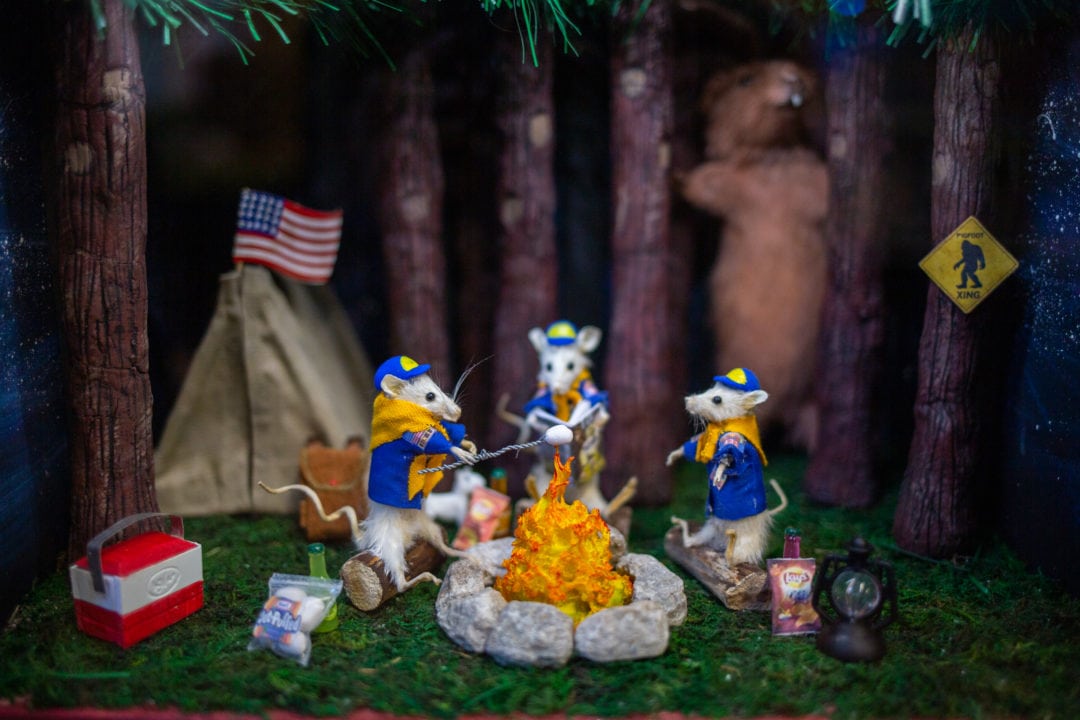
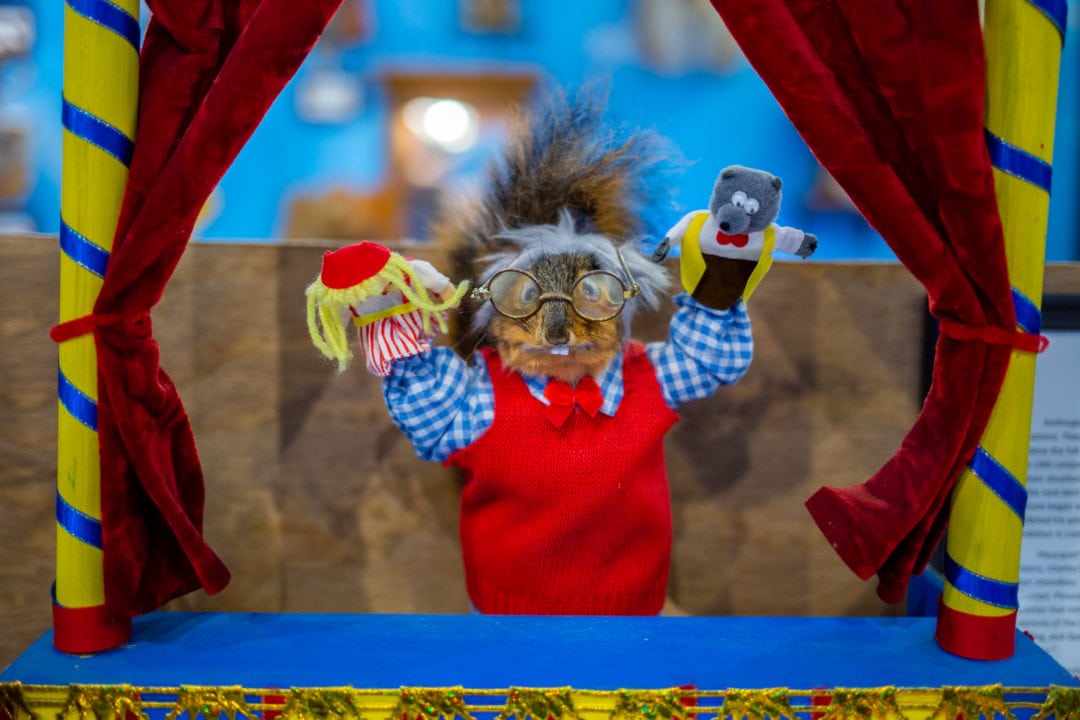
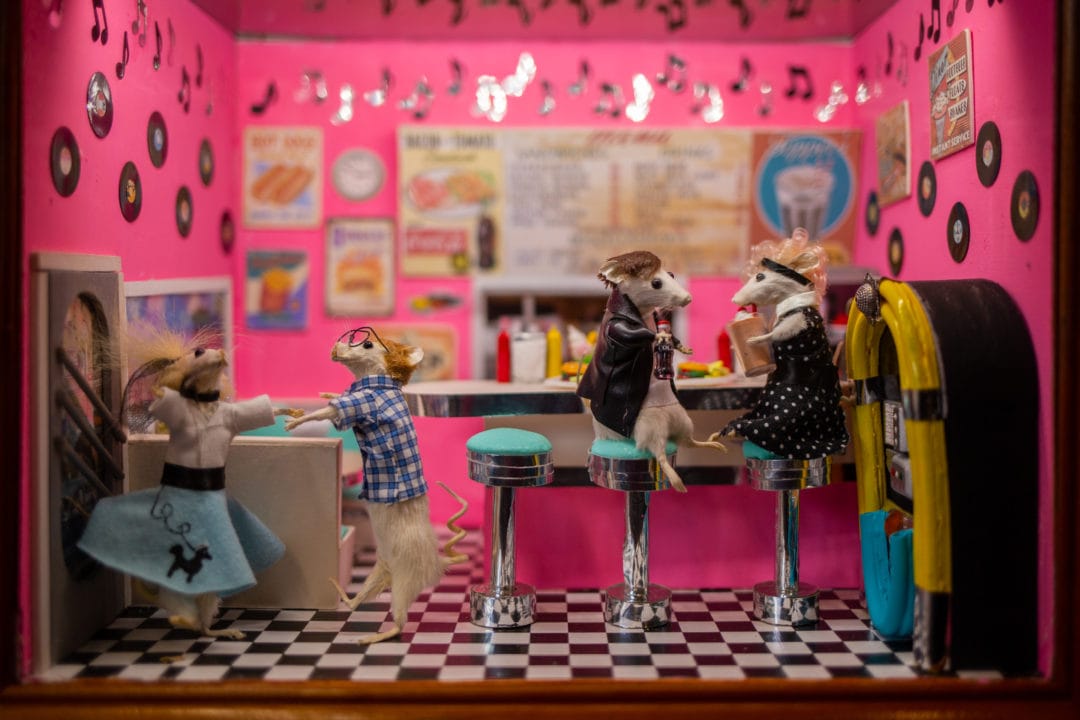
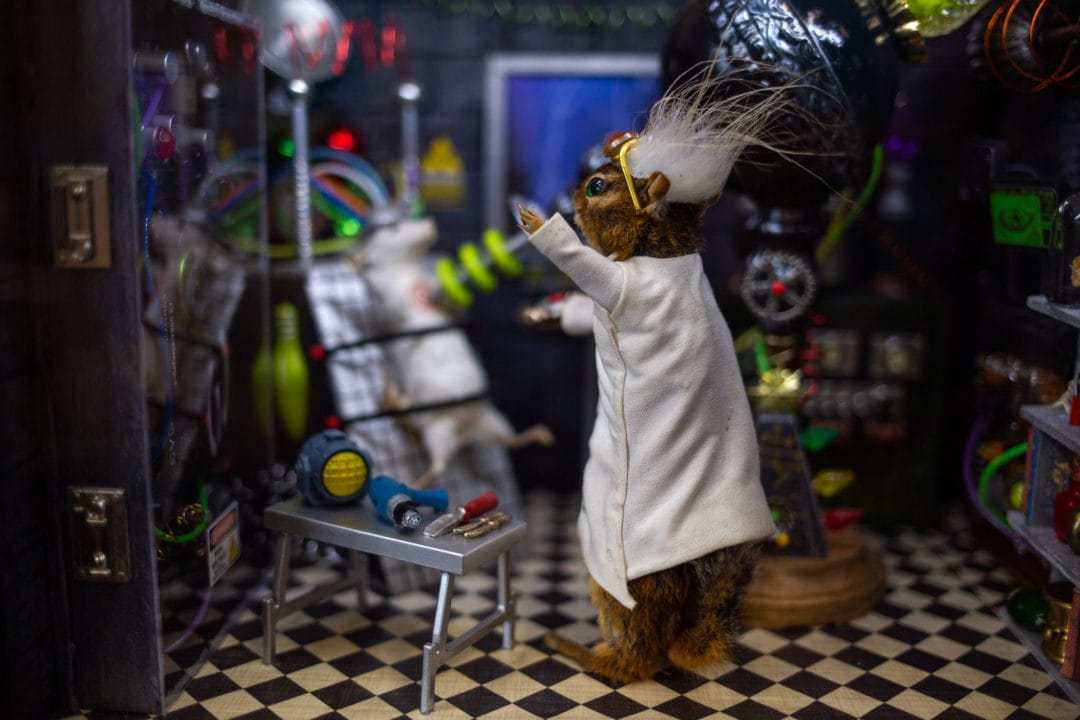
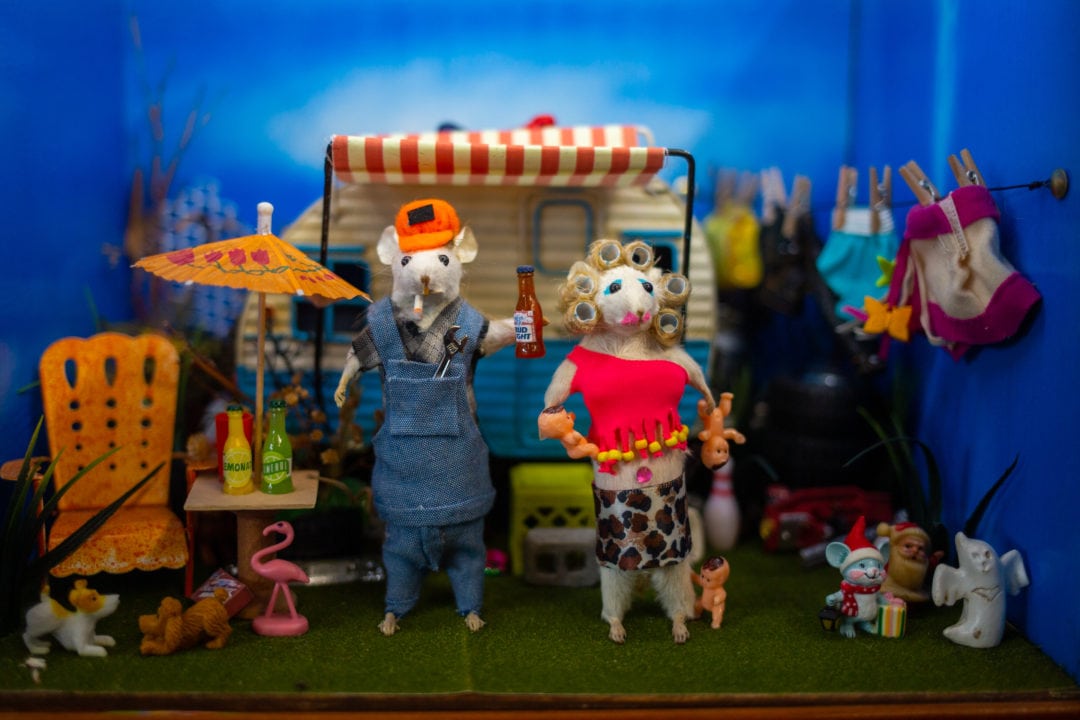
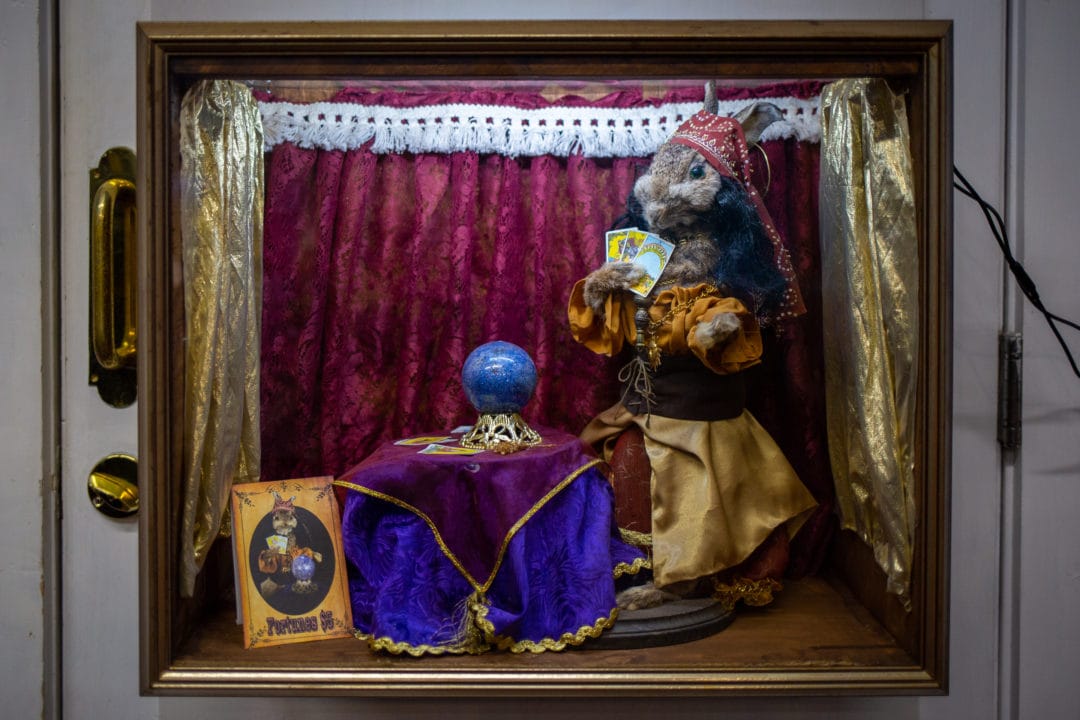
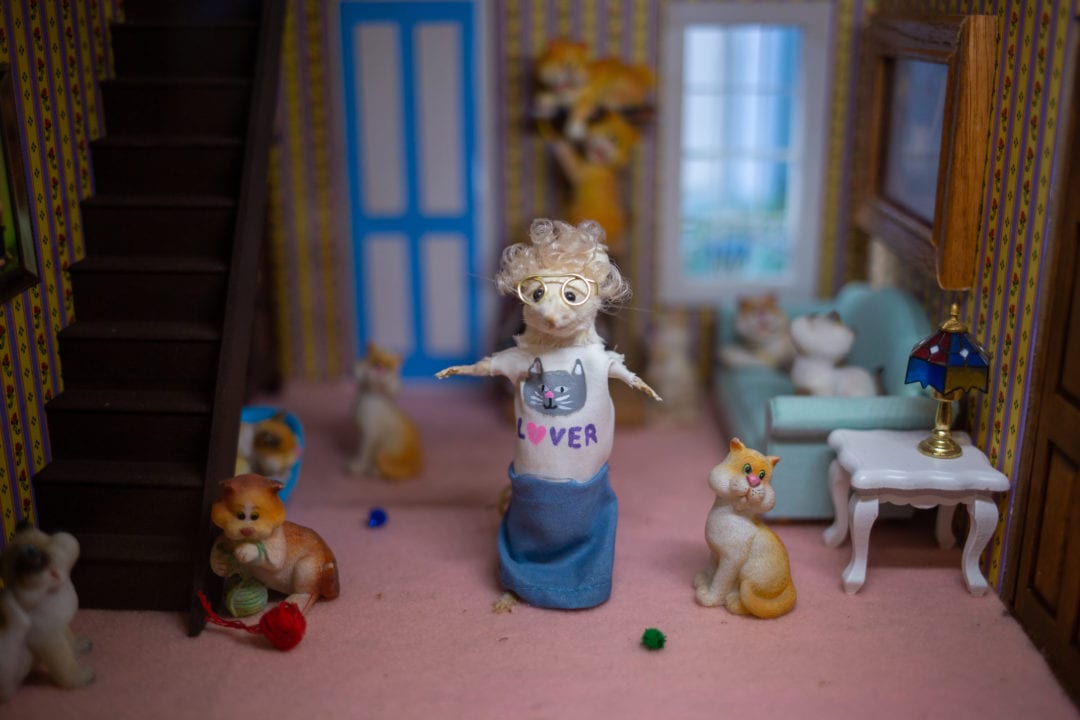
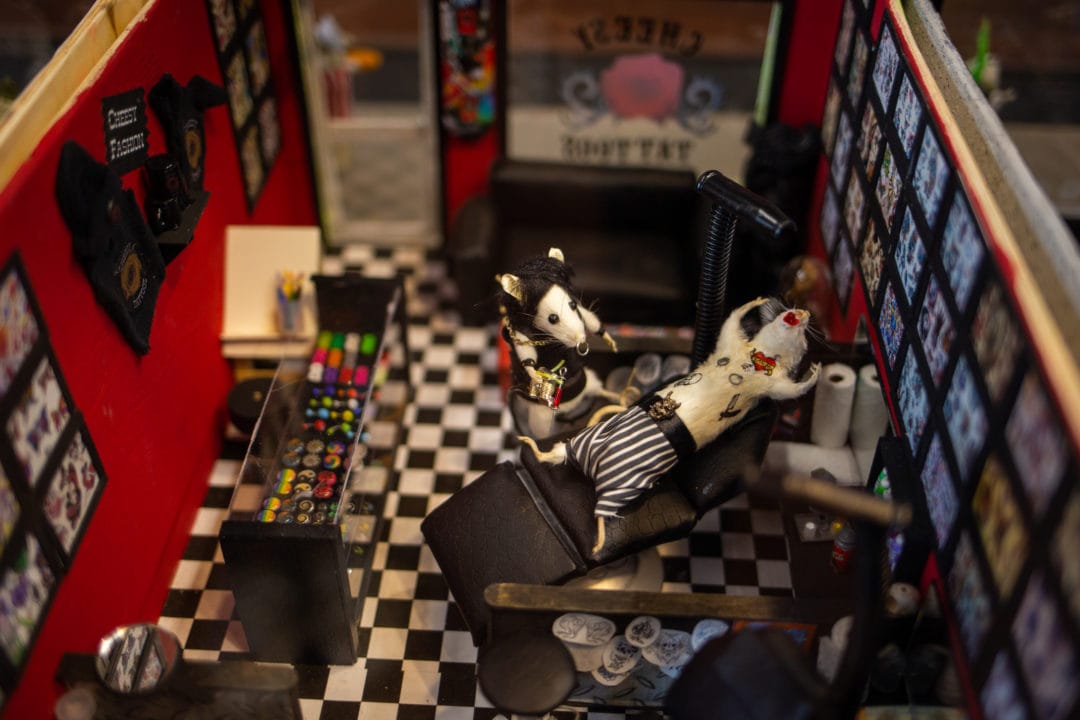
When one visitor asked how the couple felt about “trapping” the animals’ souls inside of their artwork, Brandon says he countered with a question of his own: “Do you think your grandma’s soul is trapped in her body in a casket?” Julie adds that a traditional burial seems way worse than ending up in one of her whimsical dioramas: “I love to describe our perspective to people who are on the fence. Humans get funerals and I think animals should get taxidermied. In fact, I would much rather be a mermaid mouse than stuck in a box for eternity.”
Looking at things differently
Soon after they completed their first successful taxidermy attempt, the Howeys were working their way through “every ‘90s sitcom,” putting in 16-hour days, 7 days a week, crafting miniature worlds for their mice to inhabit. “The dioramas are really what we love to do,” Julie says. “We enjoy the art of it. We’re not really great artists but the mice give it a unique twist.”
Brandon says they try to make their dioramas, which include a mix of miniatures created from scratch and repurposed found objects, recognizable to a wide range of visitors. The couple scours craft stores and junk shops for tiny trinkets, often turning trash into museum-quality treasures. In the tavern, a mouse is perched on a bottlecap barstool; in another scene, silver jewelry O-rings double as handcuffs and various clock parts create a steampunk vibe.
“We collect junk and our studio is full—we can pretty much make anything,” Brandon says. “You start to look at things differently. It took us a long time and I still don’t know that we’ve figured it out. We just wanted to do something cool with our lives.”
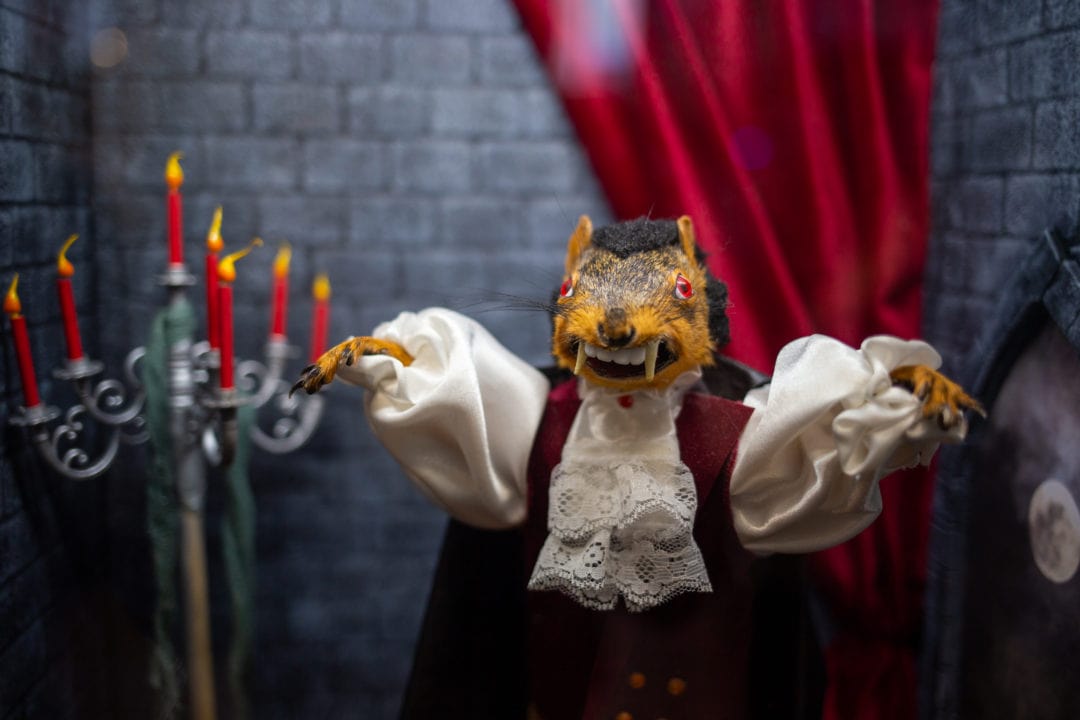
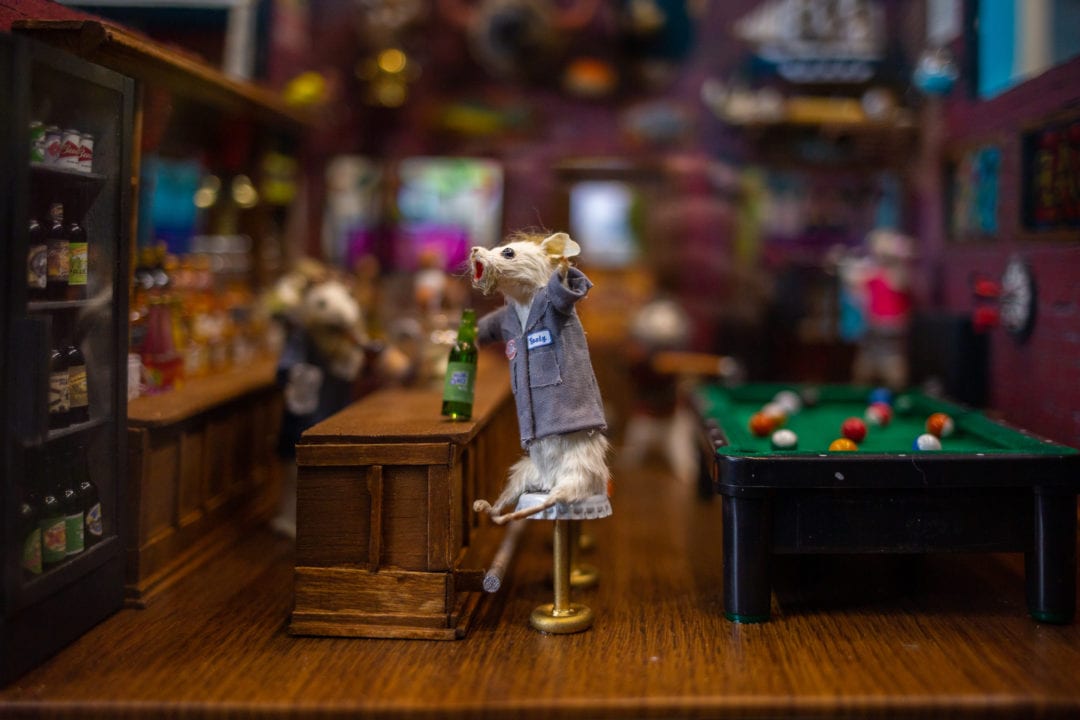
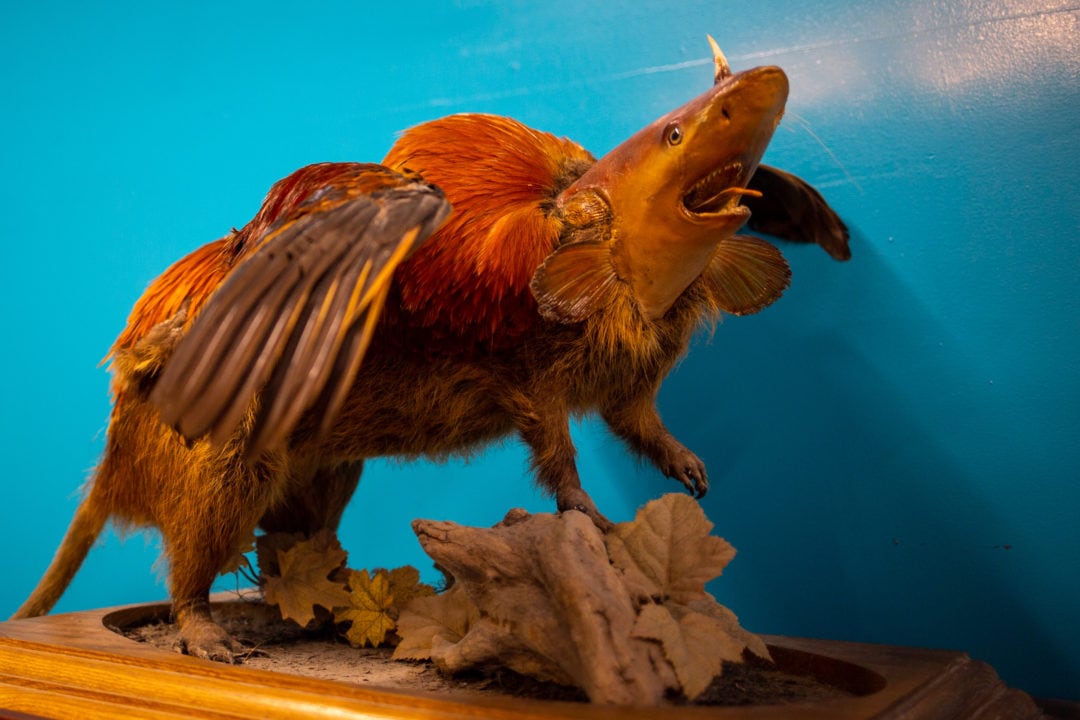
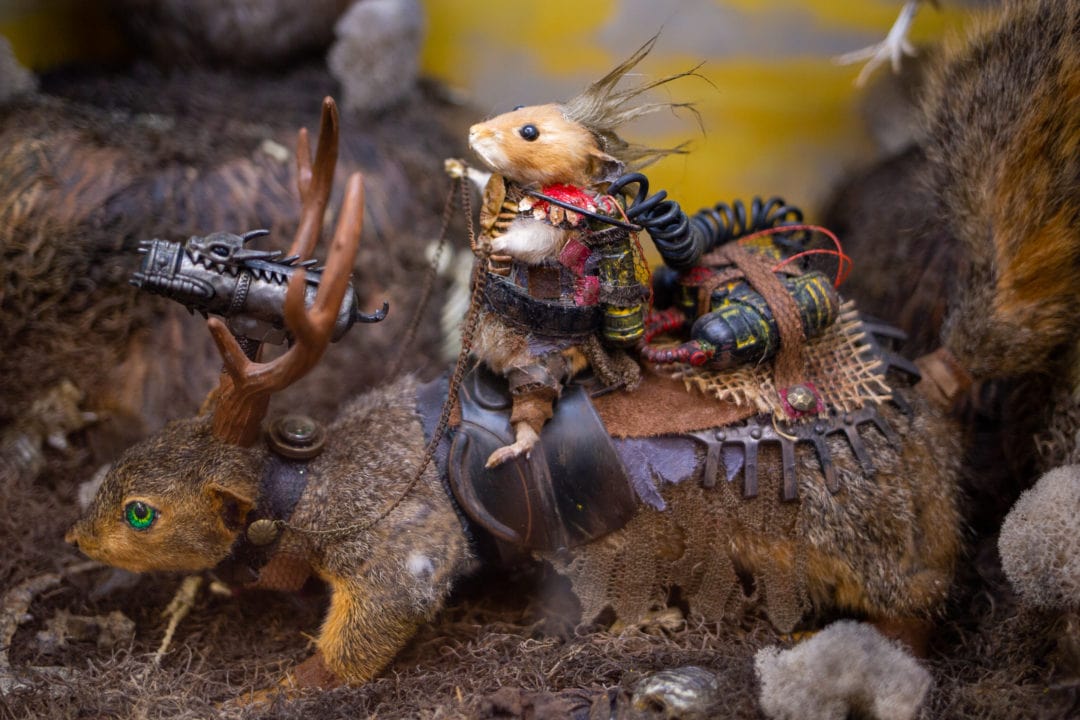
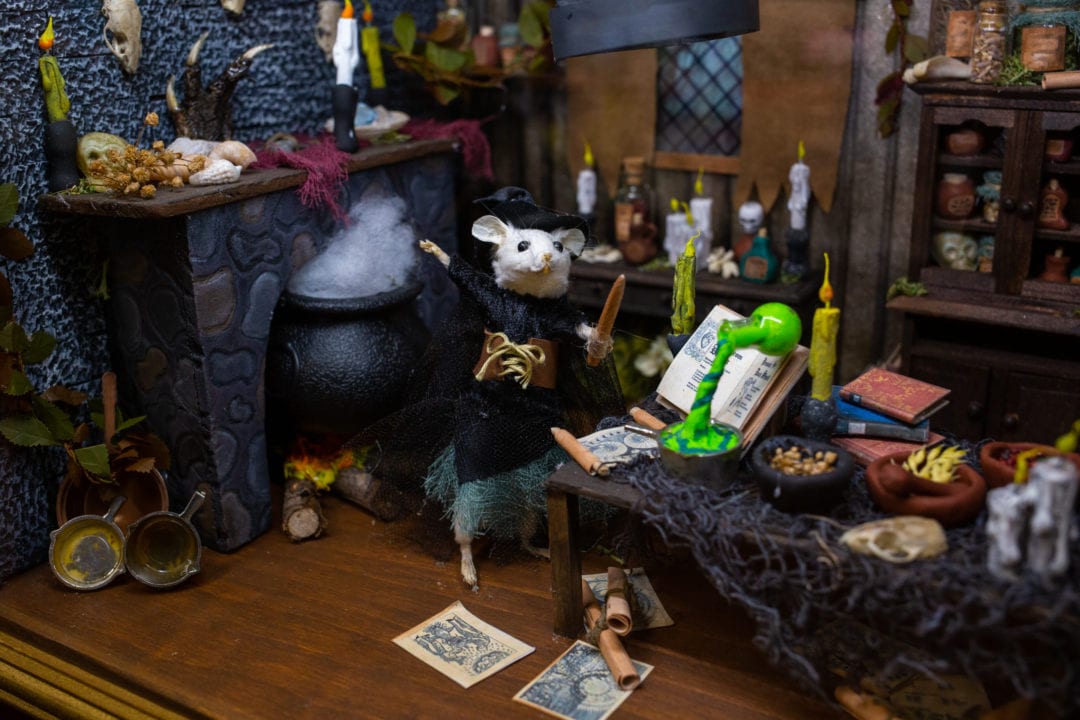
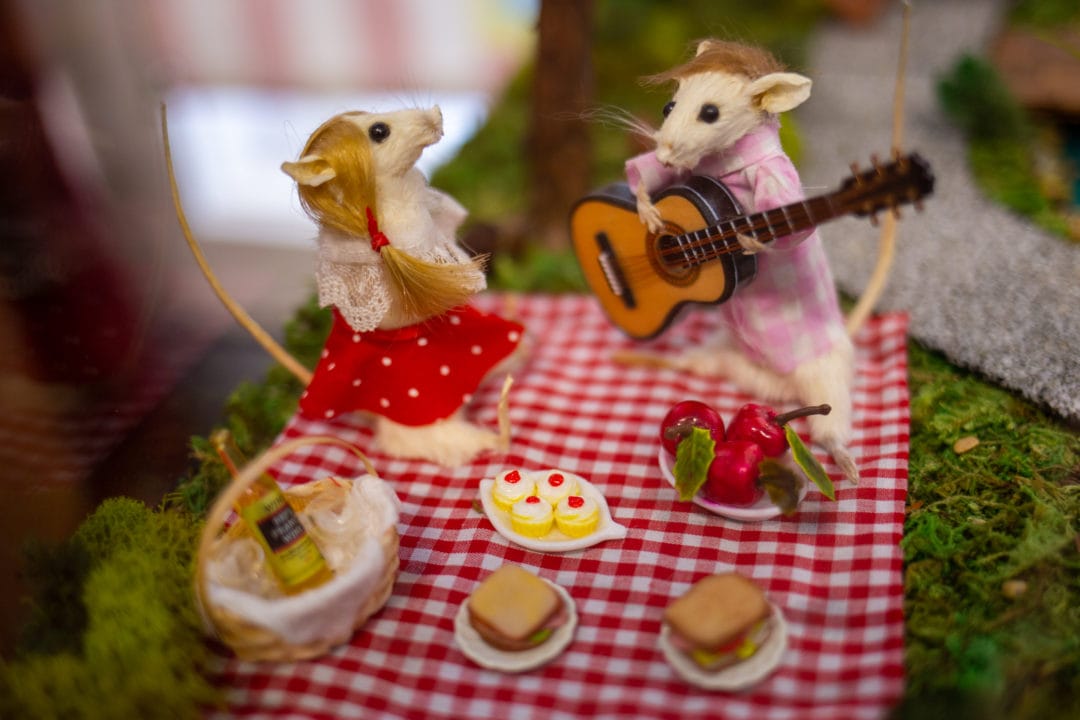
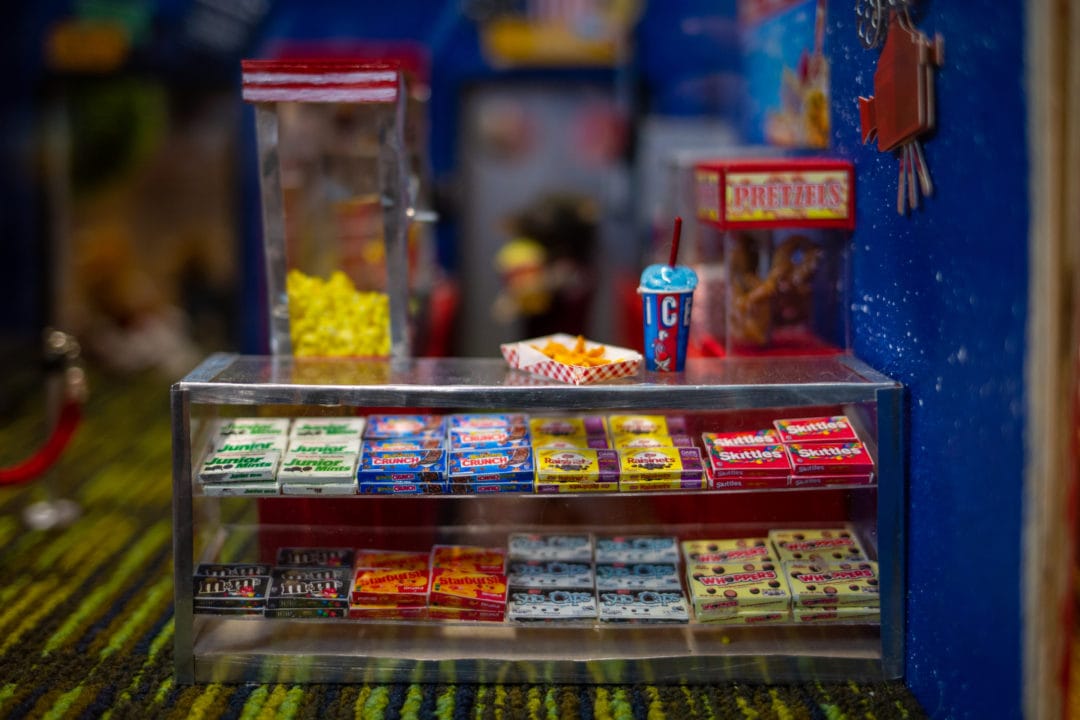
While the couple’s main residence and art studio is still in Indiana, they now spend half the year living in a camper on the northern tip of Michigan’s Lower Peninsula. Taxidermy is ubiquitous in bars and restaurants across Michigan, a state with deep ties to fur trading and hunting. All those dark, rural forests are also perfect places for cryptozoology and other conspiracies to flourish; Mystery Town USA, featuring exhibits on Bigfoot, the Loch Ness Monster, and the Bermuda Triangle, “brought a little bit of weird to the area,” Brandon says.
But mostly, Mackinaw City was just “t-shirts and fudge” before the Howeys opened their museum in a permanent storefront located near a distillery, an axe-throwing venue, and a shop offering old-timey photos. “Now it’s t-shirt shops, fudge, and a weird mouse taxidermy museum,” Julie says.
Crap taxidermy and Deervid Bowie
It’s definitely weird, but the Wacky Taxidermy and Miniatures Museum contains much more than just mice. Similar to Ripley’s, the museum’s two rooms are packed with displays devoted to notoriously dubious creations such as the Fiji Mermaid and fur-bearing trout. There’s an entire wall of “-lopes” inspired by the mythical jackalope (a jackrabbit with horns), one of the only known “Beers” on display (half bear, half deer), and at least one Big Mouth Billy Bass (the animatronic fish sings “Take Me to the River”).
A section of “taxiderpy” or “crap taxidermy,” inspired by a book and popular Twitter account, features animals that have seen better days—or were made by someone who didn’t quite know what they were doing. “This ugly coyote is a perfect piece of crap taxidermy,” Brandon says. “It’s just terrible, but it’s so good. Is it interesting to look at? That’s all that matters.”
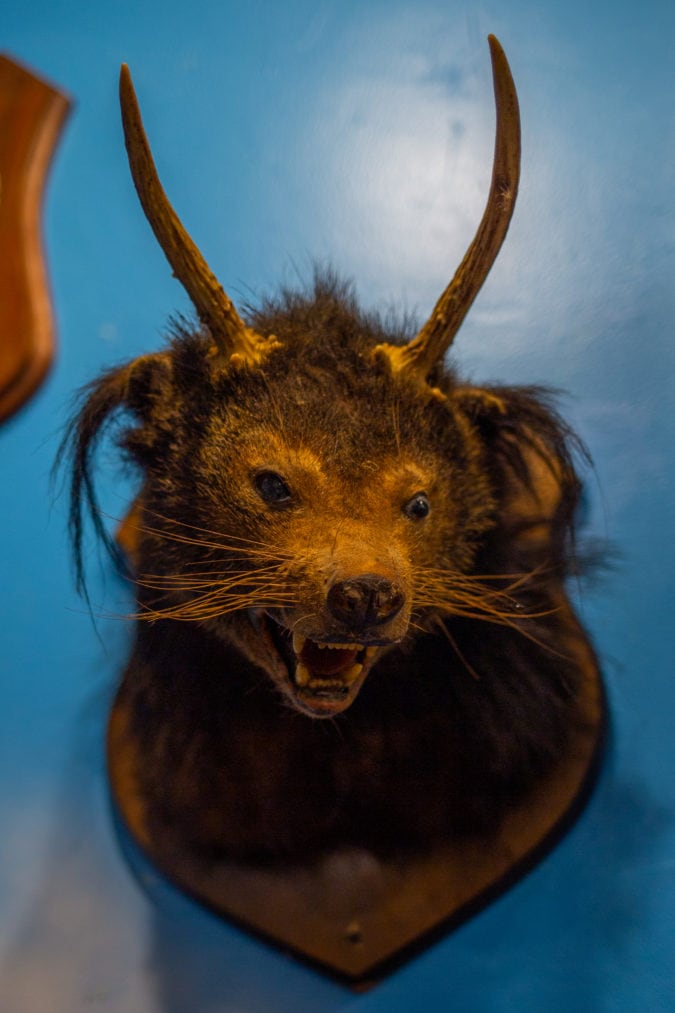
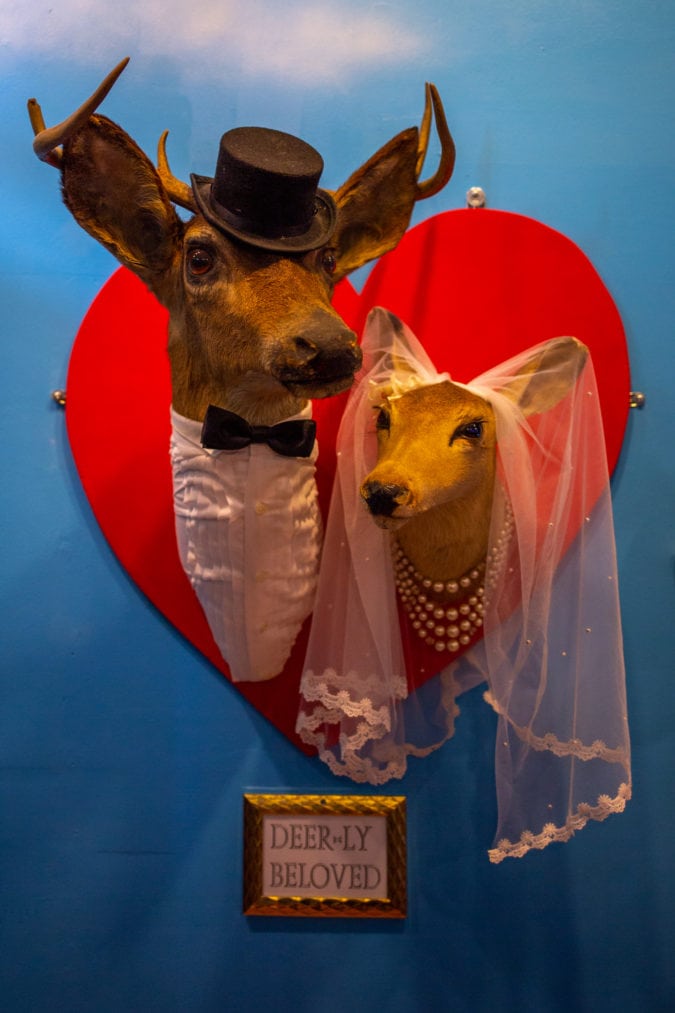
The piece that started it all is an Asian binturong mounted with antlers—also known as a “bearcatalope.” It was the first piece of taxidermy the couple bought, from an antique store in Anderson, Indiana, in 2011. The shop’s owners had formerly operated a zoo and when their beloved bearcat died, they had him taxidermied. “He was on a wall in our home for a long time,” Brandon says. “And now he’s in a museum.”
The Howeys’ current wishlist includes one mythical creature, a pegasus gathering dust in a friend’s horse trailer (made by the same person who created the “Beer,” the winged pony is not for sale), and a stranger-than-fiction technicolor squirrel from India. But it’s two common deer heads that Julie says prompt “an instant chuckle” from visitors; outfitted in a white veil and black top hat, the bride and groom are mounted on a red wooden heart above a sign that reads “Deerly Beloved.”
Although the $5 admission price practically guarantees repeat business, the couple has plans to continue adding pieces in the future to keep their museum fresh. They’re particularly excited about dressing up more existing mounts, this time as famous musicians. Julie has already begun to name them: Deervid Bowie, Elfish Presley, and Tayantler Swift.
“I can’t wait,” Brandon says.


